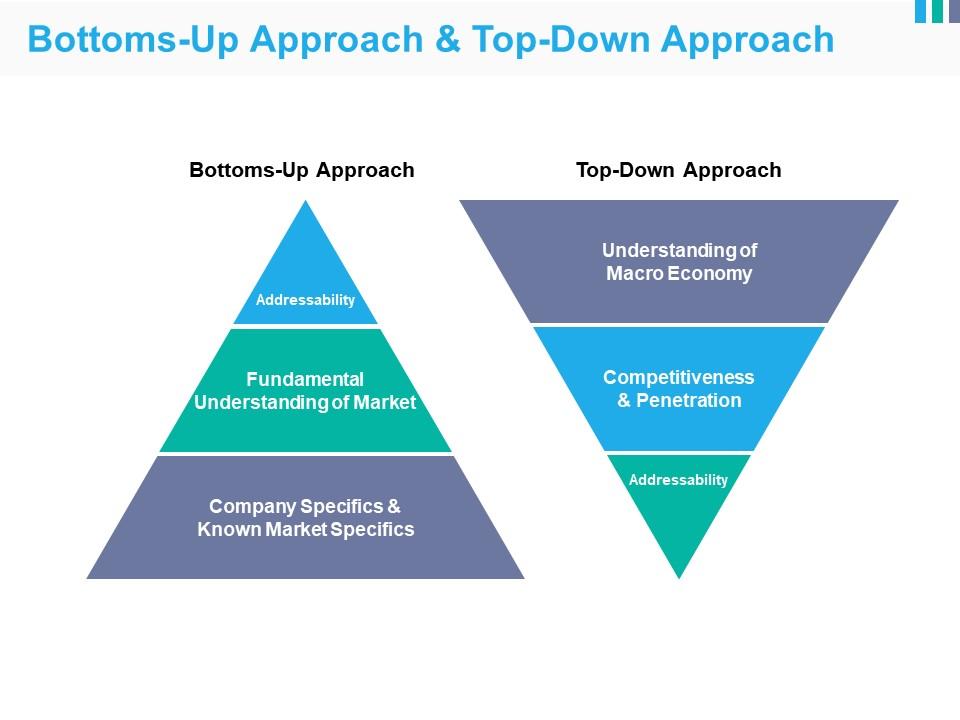
Bottoms Up Approach And Top Down Approach Ppt Example 2015 Presentation PowerPoint Diagrams
Level Up Your Team. See why leading organizations rely on MasterClass for learning & development. Businesses can adopt a top-down or a bottom-up approach to management and decision-making. While each style of management has its pros and cons, business professionals should take the time to learn how each works.
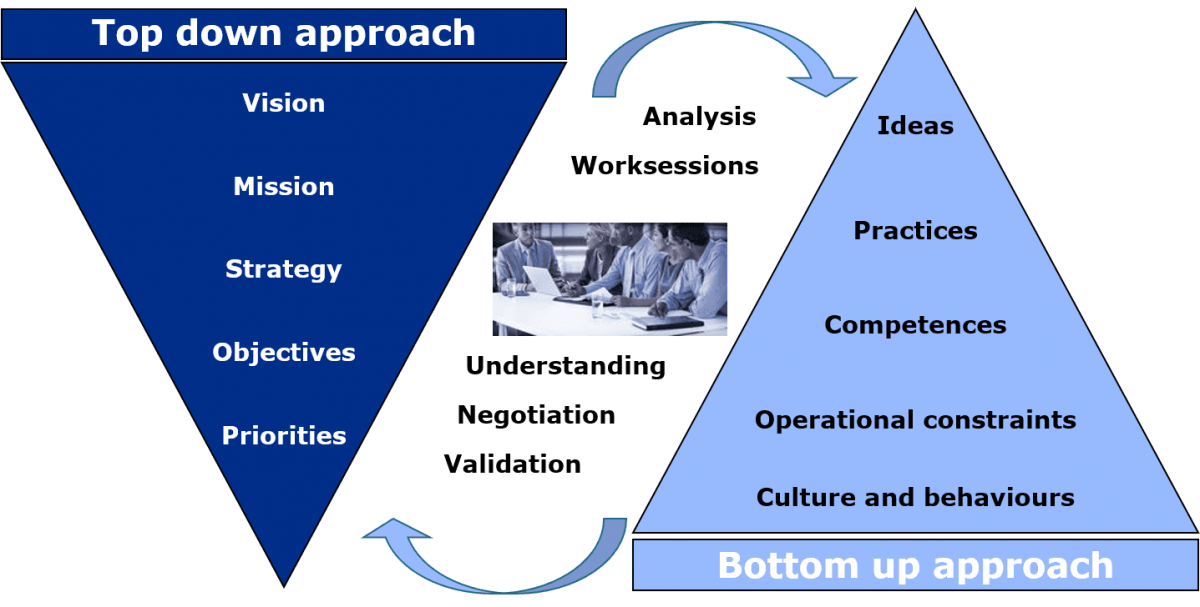
Top Down Approach Vs Bottom Up Approach
Typically, a bottom-up approach means there are more details (and maybe even more tasks). Possible downside: Time-consuming and resource-heavy. When it comes to estimating task duration, a critical component to any project plan, managers often use both a bottom-up and a top-down approach: Bottom-up estimating approach: Allows teams to estimate.
 (1).jpg)
TopDown Vs. BottomUp Approach A Comprehensive Guide
Top-Down Management Approach Examples Apple. Raghid Shreih is the Engineering Program Manager at Shopify. In an article titled "Apple vs. Google: Top-Down vs. Bottom-Up Innovation" on LinkedIn, he describes Apple as an organisation that uses the top-down management style. "Apple follows a more traditional approach to innovation, as demonstrated with Apple's most successful products.
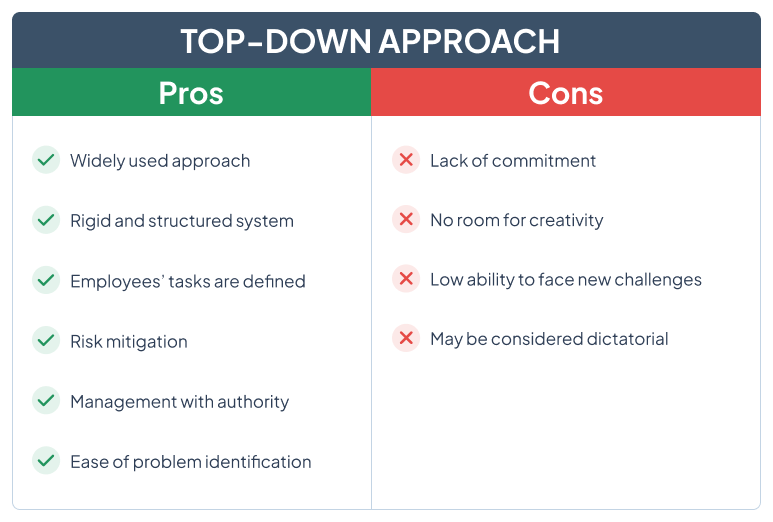
Topdown vs Bottomup ventajas e inconvenientes Triskell
Companies in highly regulated industries are also more likely to use top-down management, such as banks and financial institutions. The Bottom-Up Management Style. In bottom-up management, team members participate in every step of the management process. This approach allows managers to communicate goals through milestone planning.
-01.png?width=2500&name=Kainexus Infographic - July 2022 (2)-01.png)
TopDown vs. BottomUp Management Which Style is Best?
Top-down management pros and cons. The top-down approach's strengths lie in its emphasis on clear direction, centralized control, and efficient task delegation. However, it also presents limitations that can hinder innovation and employee engagement. The following sections highlight a few pros and cons of the top-down planning approach and.

3 Tips to Increase Alignment when Managing Multiple Projects
Team Asana. February 24th, 2024 7 min read. Summary. The top-down approach to management is when company-wide decisions are made solely by leadership at the top, while the bottom-up approach gives all teams a voice in these types of decisions. Below, we cover the details, pros, and cons of top-down vs. bottom-up management.
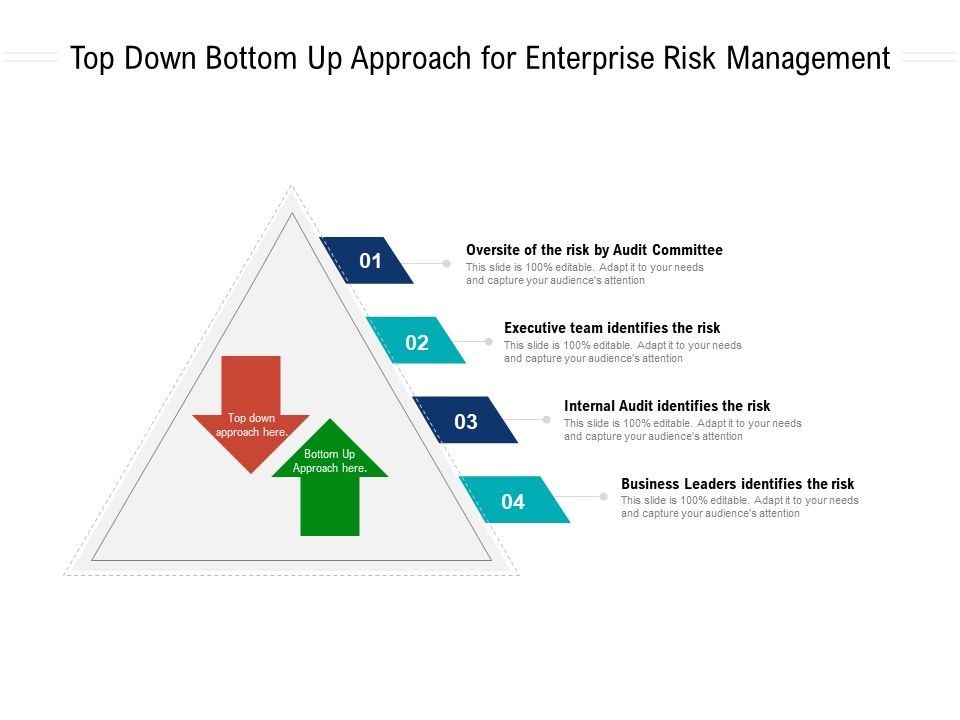
Top Down Bottom Up Approach For Enterprise Risk Management Presentation Graphics
Benefits of Top-Down Management: Clarity and Direction: Setting clear goals at the top level allows organizations to focus efforts toward shared objectives, reducing confusion and overlap. Efficient Decision-Making: The top-down model excels in situations that demand fast action, streamlining decision-making and implementation by involving.

TopDown vs BottomUp Leadership A Comprehensive Guide
Top-down and bottom-up are two strategic approaches used to make the right decision in the organization. . Discover the advantages and drawbacks of each strategy to determine the best fit for your business model.. A top-down approach is a management style where the leaders or executives set the goals, objectives, and strategies for the.
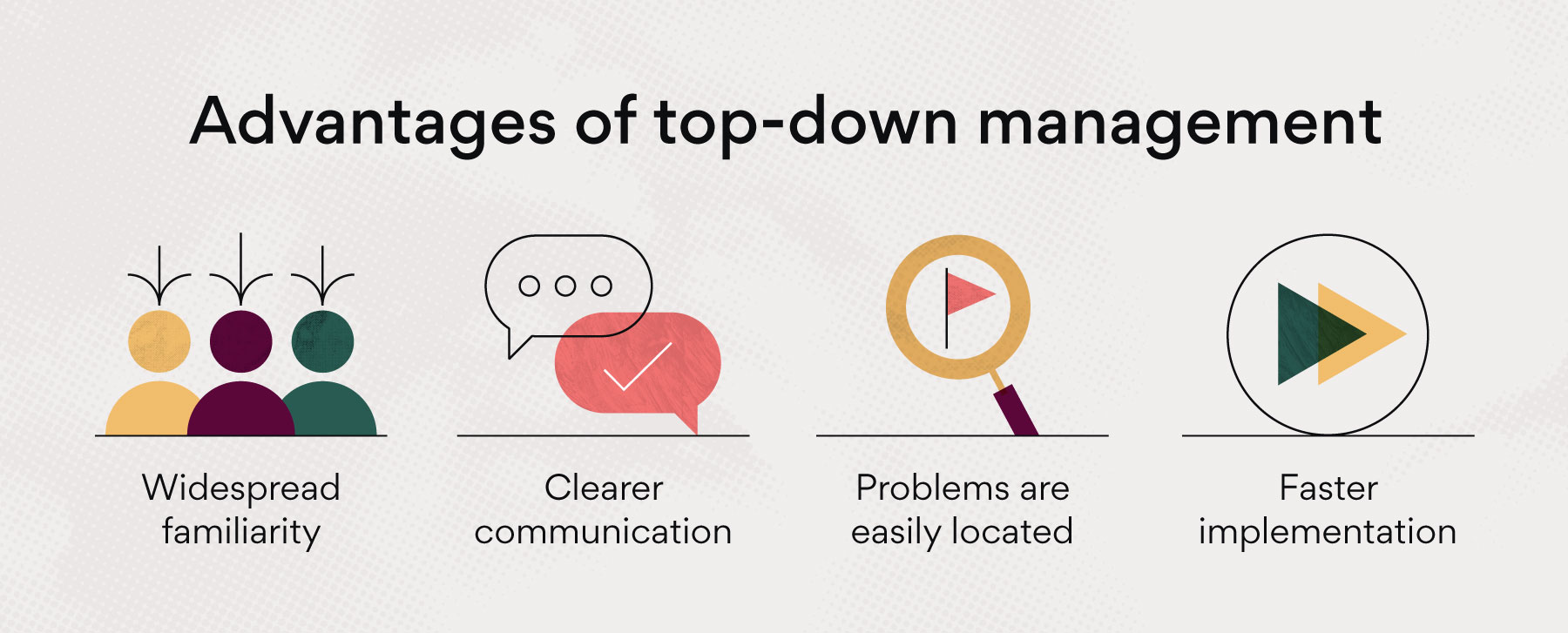
TopDown Approach vs. BottomUp Approach What’s the Difference? • Asana
Less risk to the business and its customers. Companies are slow to react to challenges. Lower costs across the organization. Employees are disengaged and less productive per person. Ultimately, what it comes down to is that top-down management allows for more control but less space for creativity and ownership.

Top Down vs. Bottom Up Management What's the Difference?
Top-down and bottom-up are two important management styles. The top-down approach starts with upper management. A CEO, senior supervisor, or project manager makes the initial decisions regarding goals, processes, and projects. This information is communicated to the company's individual departments for fulfillment.
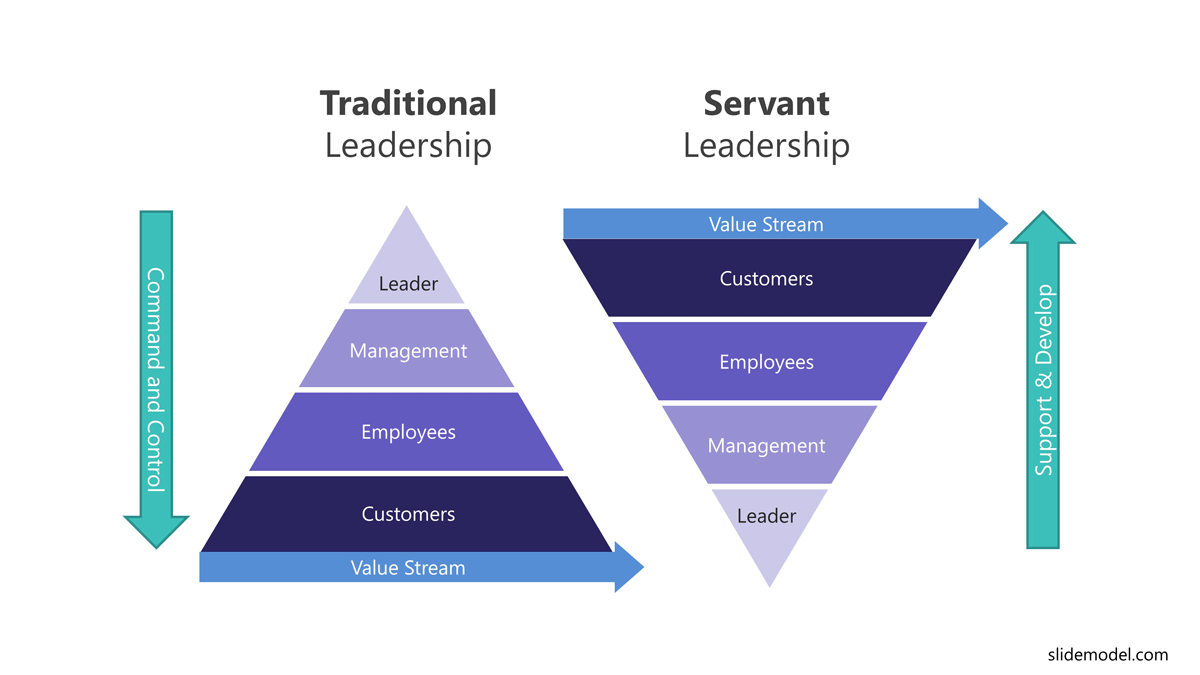
How to Decide Between Top Down & Bottom Up Management Styles
The top-down approach relies on higher authority figures to determine larger goals that will filter down to the tasks of lower level employees. In comparison, the bottom-up style of communication features a decision-making process that gives the entire staff a voice in company goals. Each task remains fluid as employees achieve their goals.

Topdown and Bottomup Project Management Leveraging the Advantages of the Two Approaches
Most of us are used to top-down management — the traditional approach. The leadership team sets the company's direction and major projects, and everyone else executes the plan. At the extreme, the employees execute tightly-specified tasks as quickly, consistently — and robotically — as possible. Bottom-up management is the opposite.

TopDown Vs BottomUp Management Professional Leadership Institute
Top-Down vs Bottom-Up: A Comparative Study of Management Approaches. In the world of management, there are various approaches that organizations can adopt to achieve their goals. Two popular methods are top-down management and bottom-up management. These approaches differ in their structure, decision-making processes, and overall management styles.

TopDown vs BottomUp Leadership A Comprehensive Guide
The top-down approach can be more efficient in terms of decision-making and execution. With a clear plan, task assignment is quick, and the project progresses seamlessly. While the bottom-up approach may take more time due to collaborative decision-making, it fosters high team engagement. The sense of ownership and involvement will lead to a.
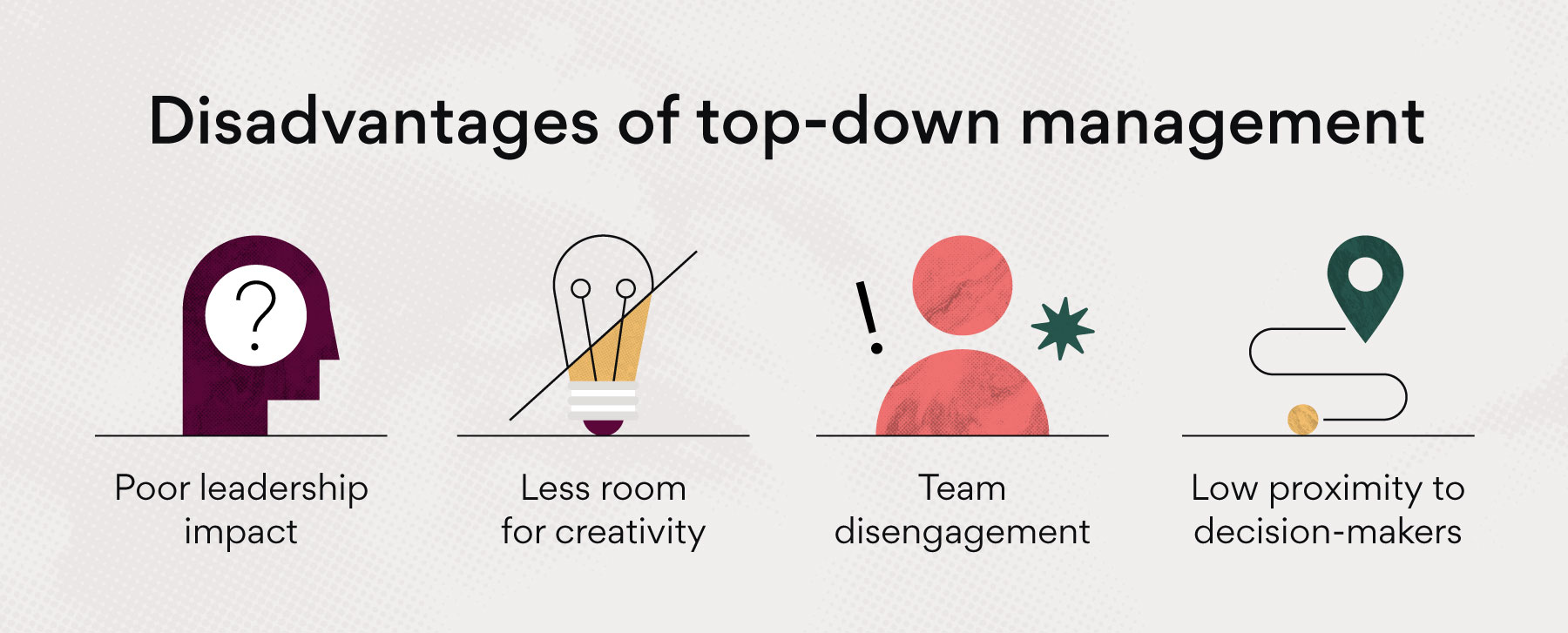
TopDown Approach vs. BottomUp Approach What’s the Difference? • Asana
Top-down and bottom-up management are both leadership styles that can help a manager or managing team implement decisions and achieve company-wide success. Here is a quick description of each: Top-down: Top-down management, also known as the autocratic leadership approach, is the more traditional of the two. It involves leaders making decisions.

Topdown and Bottomup Approaches in Business Valuation Eqvista
Also called autocratic leadership, top-down management is the most common form of management. It is hierarchical, with a chief executive office (CEO) who sets the course for the entire company. Their leadership is then carried out through a succession of executives, middle management and finally down to the bottom of the totem pole. In top-down.
